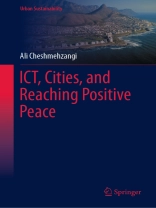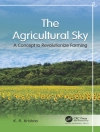This book is the first attempt to explore the use and application of Information and Communication Technology (ICT) and related smart technologies in cities and for the sole purpose of reaching positive peace. The everyday usage of digital technologies in cities encourages us to study the benefits, co-benefits, disadvantages, and threats of ICT application in cities and urban environments. The continuous growth of digital technologies and their growing demand in everyday urban practices and systems are already known to scholars, practitioners, and policy-makers. However, this book explores whether or not such applications and usage help us reaching positive peace. This approach is novel in the field of urban studies, allowing us to identify and highlight best practices, successes, and failures of ICT application to meet positive peace pillars.
The scope of the book highlights our focus on positive peace and its eight pillars, mainly how they are meant to be achieved in cities and urban areas. With an analytical view on the topic, we aim to reflect on the systematic features of urban systems, using positive peace pillars as the primary targets. We believe ICT application and usage in cities could be more directive and beneficial to reach peace and prosperity to achieve such a goal. Therefore, this book provides a holistic guideline and coverage of ICT use for positive peace pathways and peace-building practices. We hope the findings of the book help researchers and policy-makers to come up with novel and integrated strategies, ensuring that our everyday usage of digital technologies, ICT, and smart tools, are more meaningful and people-oriented.
Tabela de Conteúdo
Chapter 1: Introduction to ICT and Smart technologies in Cities.- Chapter 2: The role of ICT and Smartness for Peace-building Processes (with Narrative of 8 positive peace pillars/dimensions).- Chapter 3: ICT for well-functioning government in cities.- Chapter 4: ICT for equitable distribution of resources in cities.- Chapter 5: ICT for free flow of information in cities.- Chapter 6: ICT for good relations with neighbours in cities.- Chapter 7: ICT and high levels of human capitals in cities.- Chapter 8: ICT and acceptance of the rights of others in cities.- Chapter 9: ICT and low levels of corruption in cities.- Chapter 10: ICT and sound business environment in cities.- Chapter 11: Learning from practices and the use of ICT for positive peace.- Chapter 12: Augmented Plans: Future Directions and Potential Pathways.
Sobre o autor
Ali Cheshmehzangi is a Full Professor of Architecture and Urban Design with a Ph.D. Degree in Architecture and Urban Design, a Masters Degree in Urban Design, a Graduate Certificate in Professional Studies in Architecture, and a Bachelor Degree in Architecture. He is an urbanist and urban designer by profession and by heart. He studies cities and city transitions, sustainable urbanism, and integrated urban design strategies. Ali is Head of the Department of Architecture and Built Environment, Director of the Centre for Sustainable Energy Technologies (CSET), and Director of Urban Innovation Lab at the University of Nottingham Ningbo China. He is also a Specially-Appointed Professor at Hiroshima University, Japan. More recently, he works on two research projects on Integrated Urban Modelling Framework, and ICT-based smart technologies for resilient cities. Some of his previous projects are: smart eco-cities in China and Europe, low-carbon town planning in China, green infrastructure ofcities, nature-based solutions in China, toolkit for resilient cities, sponge city program and green development in China, low carbon and climate-resilient planning, and other urban transition studies. So far, Ali has +135 published journal papers and nine other published books, titled ‘Designing Cooler Cities’ (2017), the award-winning ‘Eco-development in China’ (2018), ‘Sustainable Urban Development in the Age of Climate Change’ (2019), ‘Identity of Cities and City of Identities’ (2020), the double award-winning ‘The City in Need’ (2020), ‘Urban Memory in City Transitions’ (2021), ‘China’s Sustainability Transitions’ (2021), ‘Sustainable Urbanism in China’ (2021), ‘Urban Health, Sustainability, and Peace in the Day the World Stopped’ (2021), and ‘Green Infrastructure in Chinese Cities’ (2022).












